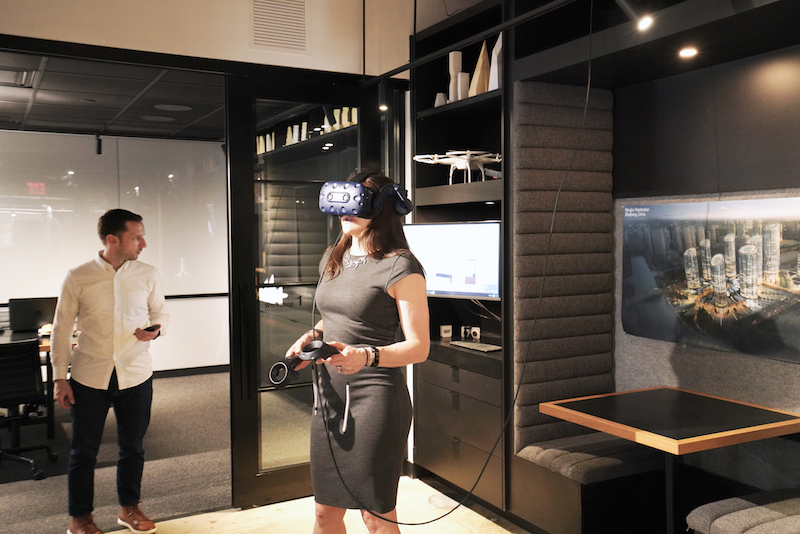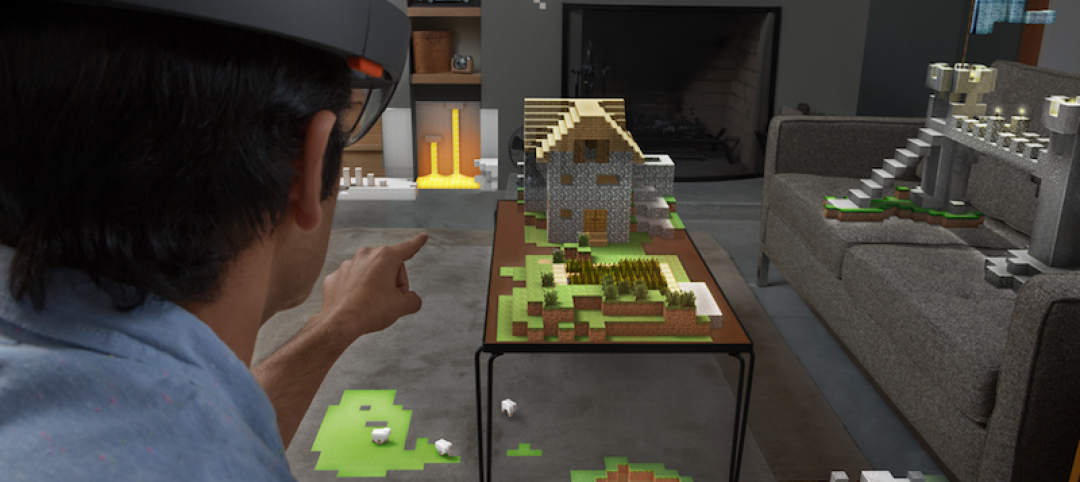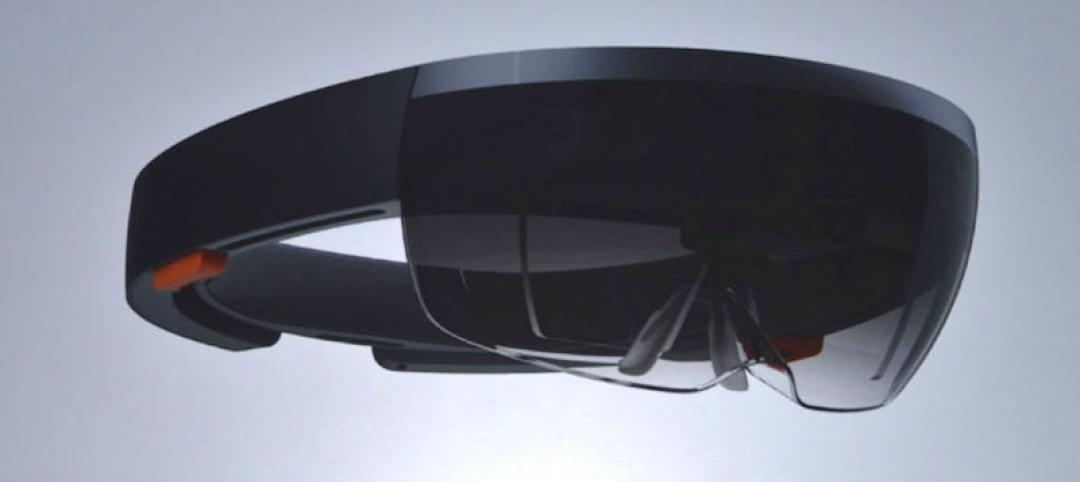Woods Bagot, one of the industry’s oldest architectural firms, is embracing the future of design and client relations with virtual reality apps that offer customizable interfaces.
For a number of years, the firm has played with a variety of virtual reality apps for design presentations, including ones that allow for 360-degree viewing.
About a year ago, Woods Bagot, with 16 studios around the world, developed its own VR app, driven by game-engine technology, with the goal being to give clients a unique spatial and human experience “that you can’t get from a rendering or even animation,” says Shane Burger, Woods Bagot’s Principal and Global Leader of Technical Innovation.
The “bespoke” app works like this: Woods Bagot creates what Burger calls a “white-card rendering” that puts the client in the VR space and allows him or her to move from room to room. The environment is designed, but in a very early concept stage.
The apps, so far at least, have been most effective for designing interiors, says Burger.
The beauty of using VR apps in early design stages is that there’s a fairly quick turnaround so that a more refined design can be presented to the client either in Woods Bagot’s New York office—which includes a 10x15-ft space equipped with an HTC Vive headset and screen—or by using a phone app with a portable headset like Google cardboard.
One of the benefits of having clients install the apps on their phones, explains Burger, is that they can receive Woods Bagot’s design proposals right away, and that multiple people can view the design simultaneously. (The designs are accessed via a web link.)
Woods Bagot has developed apps for both iOS and Android phones.
The first time the firm deployed a customizable VR app was to bid on a project with a technology client. Since then, Woods Bagot has made a number of refinements to its platform, such as adding more interfaces that allow clients to “walk through” multiple floors of the building. Woods Bagot is now developing apps that allow users to flip through white-card and materials environments within VR.
The biggest “learning step” in virtual design, says Burger, has been “to keep our options open, and to keep the user interface really simple, because most clients don’t have a lot of experience with VR.” Indeed, when Woods Bagot walks a client through the process, it typically has the user stay relatively stationary to get used to the VR surroundings.
Burger says most users are less disoriented when they use a mobile app because the viewer doesn’t block their peripheral vision.
VR is becoming a more sophisticated design tool for Woods Bagot, whose visualization team in London has been generating renderings right from virtual reality. Woods Bagot also recently used its VR app with a client for a project in Japan with 18 floors.
Woods Bagot is striving to get to the point where using a customized VR app enables a conversation with clients “that wouldn’t have happened otherwise,” says Burger.
Related Stories
Augmented Reality | Apr 21, 2016
Is mixed reality a more exciting prospect than virtual reality? Movie director Peter Jackson thinks so
Magic Leap and Microsoft’s HoloLens are just two examples of mixed reality technology on the horizon that are determined to blend the real world with the stuff of dreams.
Virtual Reality | Apr 8, 2016
Skanska will use Microsoft HoloLens to lease planned Seattle high rise
The mixed reality headset will allow people to take a holographic tour of the building while keeping visual contact with the leasing representative.
BIM and Information Technology | Jan 27, 2016
Seeing double: Dassault Systèmes creating Virtual Singapore that mirrors the real world
The virtual city will be used to help predict the outcomes of and possible issues with various scenarios.









